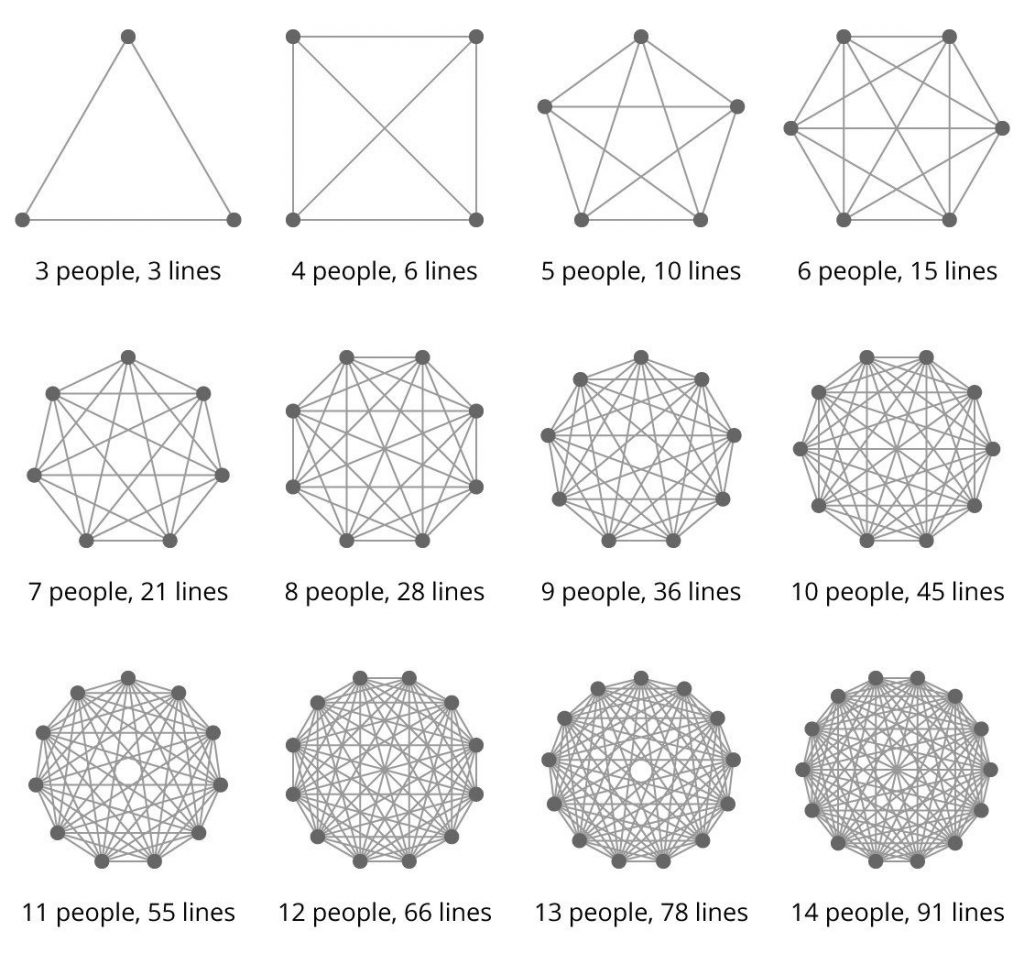You may have heard the famous “two pizza rule” saying from Amazon CEO Jeff Bezos —if a team can’t be fed by two pizzas, that team is too big.
I began thinking a little more about this recently after stumbling across the below diagram on LinkedIn – an illustration often used to explain how ‘smaller teams are better’ due to communication overhead.
This is the idea of “link management,” a concept introduced by Harvard Psychology professor J. Richard Hackman. In short, it shows that as a team gets bigger, the number of links that need to be managed among members goes up at an accelerating, almost exponential rate. It’s managing the links between members that gets teams into trouble.
The person who shared the diagram recently – Jim Head from reason.co – made an interesting observation, adding, ‘what if it (the diagram) was instead illustrating the amount of support a group of people could give to each other if someone was needing help?’
Putting aside the exact number of people on your team for a moment, it’s generally of upmost importance as a business leader to take time to understand what makes each of your team ‘tick’. I frequently discuss with clients how to identify people within their teams who might need that something extra. Be that support, encouragement or advice on how to elevate their skills. Frequent support and ‘check ins’ are incredibly important, not to micro manage, but to encourage the opposite – a feeling of empowerment and forward movement. These check ins allow team members to assess if they are on the right track before they wander off it, and often enable them to realise they already know a lot more than they first thought. And yes, the same applies to the leaders I advise – frequent check ins, working with a plan in mind, and steerage to stay on track.
Whilst I certainly don’t adhere to limiting the number of people on your teams to a specific number (professor J. Richard Hackman‘s rule of thumb was no double digits), I do understand the logic of small team collaboration. The fewer people working together, the less bureaucracy gets in the way. In simpler terms, fewer moving pieces equals more efficiency. Or, put another way, individual effort increases as the team size decreases.
I advocate for getting to know your current team, empowering them to manage what they know and love, and when there’s a gap – a real, true gap – in expertise, that’s the point to consider adding a team member.
Something to think about.
Don’t forget to sign up to my high/low business email, Rambling On, if you find tips and thought provoking ideas like this interesting.
Andy.
